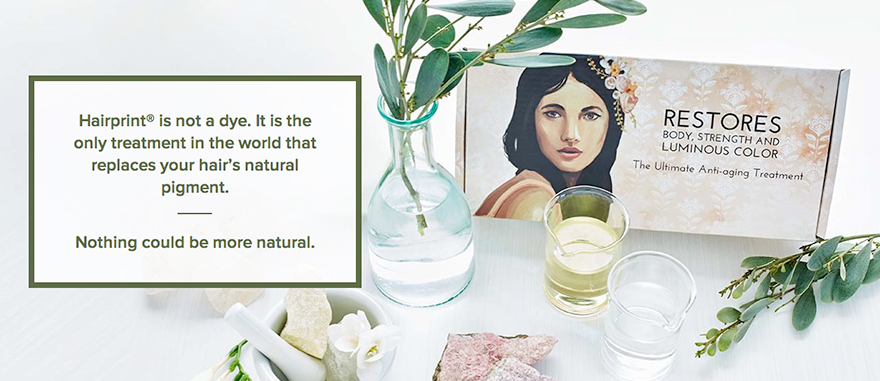Does Your Hair Dye Contain this (Deadly) Ingredient?
In this compelling explanation from his presentation at The Longevity Now® Conference 2015, Dr. John Warner reveals the deadly ingredient banned for use in the home that is still allowed in commercial hair dyes!
Transcript of “Does Your Hair Dye Contain this (Deadly) Ingredient?”
One day, don’t ask me why, I was contemplating the concept of what’s called sclerotization. When a little bug turns into a big bug, it can’t grow it’s exoskeleton. So it breaks off. And over the next couple minutes or hour, it turns dark.
And I said, “Huh. Isn’t that interesting…Here is something in nature that goes from light to black.”
Well, there is a product in the stores for men to change their color hair that has lead acetate in it. You can’t buy a house in the United States with lead paint, but you can pour this stuff on your head.
I said, “This is unacceptable. No way.”
And, so I got a bunch of hair, gray hair, and I stuck it in this process. I looked at, as David said, there is phenylalanine and tryosine and L-Dopa, and so I took some gray hair. I put some stuff in it. And it became colors.
It was really interesting but it was all over the place. It was browns and blacks and I said, “No one is going to want this. It’s all different colors.”
So I called the people that gave me the gray hair and they said, “Oh John, that gray hair isn’t from one person. It’s from a bunch of different people.”
Ahhhhhhh.
So, me being the grayest person in the building I said, “Hit me!”
So, we did me and it worked!
We took someone with black hair. It worked!
We took someone with brown hair. It worked!
We weren’t painting the hair. We weren’t coloring the hair. We were restoring the original color.
So, it’s just really cool.
And so working with Hairprint® with Paul, with Elizabeth, with Jasmine, we made this a product.
And this is how it works, okay?
You take this stuff and it starts out this pinkish color, and then it turns orange, then it turns red, then it turns brown, and then it ultimately turns black. If it’s in a petri dish, it just makes black. But if you put it on your hair, it recognizes the way your hair templates the molecules.
Okay, so what do I mean by that?
If we look at a parking lot, and we draw lines for cars to park in a parking lot, we could draw it that way. We could draw it that way. We could draw it that way. Twenty cars in the parking lot, but there are all these different geometries.
Well, that’s the way hair works. We all have the same molecules that are in the hair, so brown, black, it doesn’t matter. It’s the way they park that dictates the color. And so once we realized that, we figured it out.
All the different hair colorings, they are so nasty, they rip that natural tendency of the hair to dictate what is going on. And we lose that natural process to orient the process gently. And instead we force it!
But in this case, we say, what would happen if we did it gently?
And so guess what? Black hair has one orientation. Brown hair has a different orientation. Light brown hair (has a different orientation).
So by being gentle, by being consistent with nature, and allowing the hair’s inherent tendencies to drive the chemistry, we restore the original color hair. And that is Hairprint®.
Restore the health of your hair and bring out its innate beauty with Hairprint®.
Please Note: Hairprint® is formulated specifically for brown and black hair. Hairprint® will not work on blonde or red hair.
Hairprint® transforms the health of the hair, making it stronger, giving it more body and luster. Rather than thinking of Hairprint® as a coloring agent, think of it as a Healing System that has the added benefit of reversing gray hairs to their natural color.
Hairprint® functions in a way that is the opposite of how hair dyes work. Rather than stripping hair of its color and inserting dyes, which all permanent hair-coloring products do, Dr. Warner’s process mimics how hair gets its true color in the first place. The color responsible for all brown and black hair is eumelanin, which is a variation of the melanin pigment that is responsible for the color of your skin and eyes. The reason Hairprint® looks so natural on your hair is because it is natural.
Hairprint® is comprised of eight food grade ingredients and can be applied by you at home, with the help of a friend, or by a stylist in a salon. Hairprint® is a three-part process, with each step taking a little over 20 minutes.
For in-depth information about how Hairprint® can benefit your hair, please visit our Main Hairprint® page.
To watch a video and read more about how to apply Hairprint®, please visit our Application Instructions page.
If you currently have dyed hair, it is extremely important that you read about transitioning your hair before applying Hairprint®. Please visit our Transition Tips page.

~ David Wolfe spoke about Hairprint® during The Longevity Now® Conference 2015. To watch the video, please visit “The Natural Solution to Hair Dye is (Finally) Here!” ~






I was thrilled to watch this, then TOTALLY BUMMED when the purchase information kept telling me “this will not work for blond hair.” What happens to blond hair if you apply the hair print for lighter brown hair? Does it become brown, or does it just stay the same? Your sample in the video seemed to have variations of brown.
I was thrilled at first and them bummed for the same reason, Becky. Also, aside from the “doesn’t work on blondes” issue, a question that hasn’t been answered for me is: Does it turn your hair the the original color you were as a kid or only as an adult? I was so so blonde as a kid and then it turned brown on me as an adult. So I am wondering what the answer is.
I agree. I have reddish brown hair and really want them to come out with the formula for red!